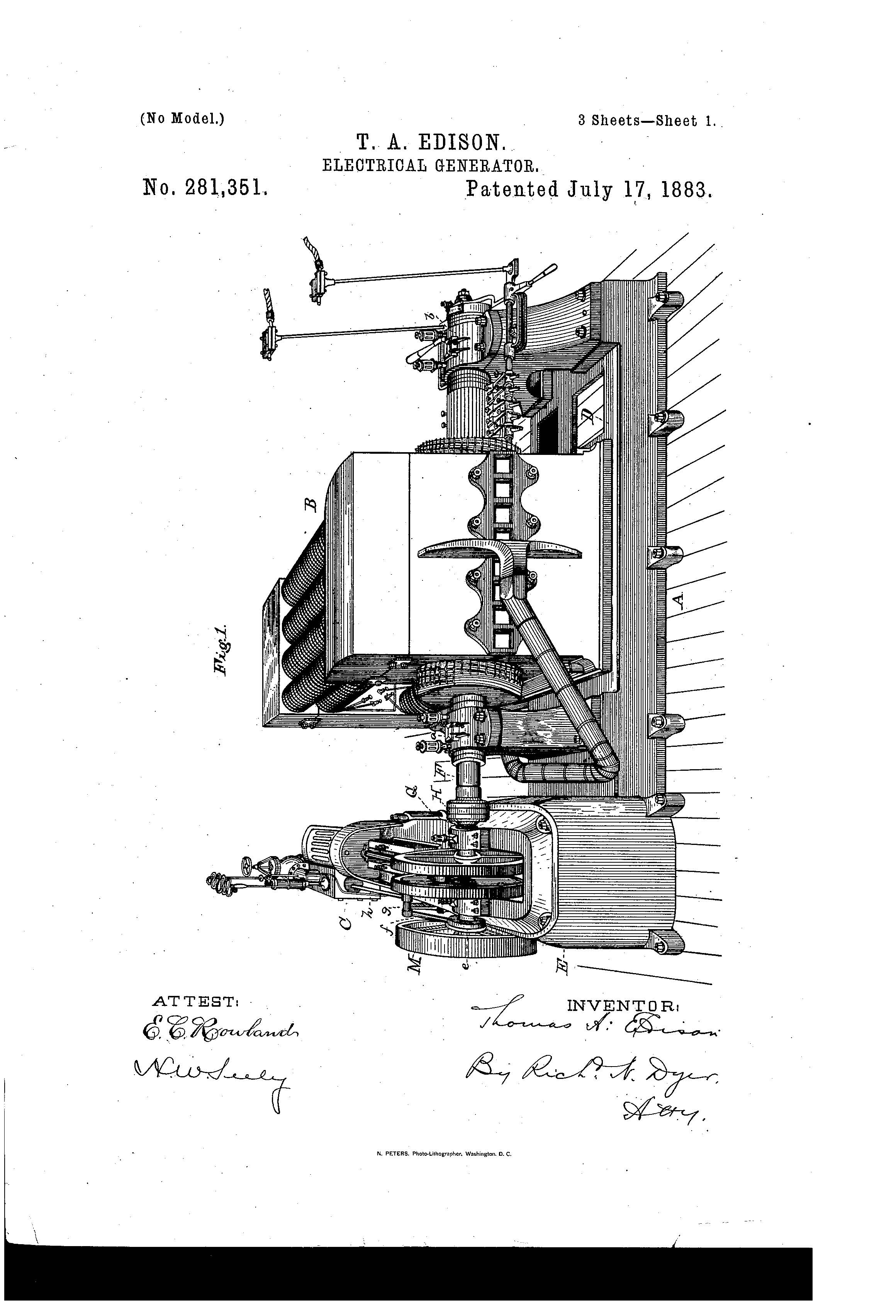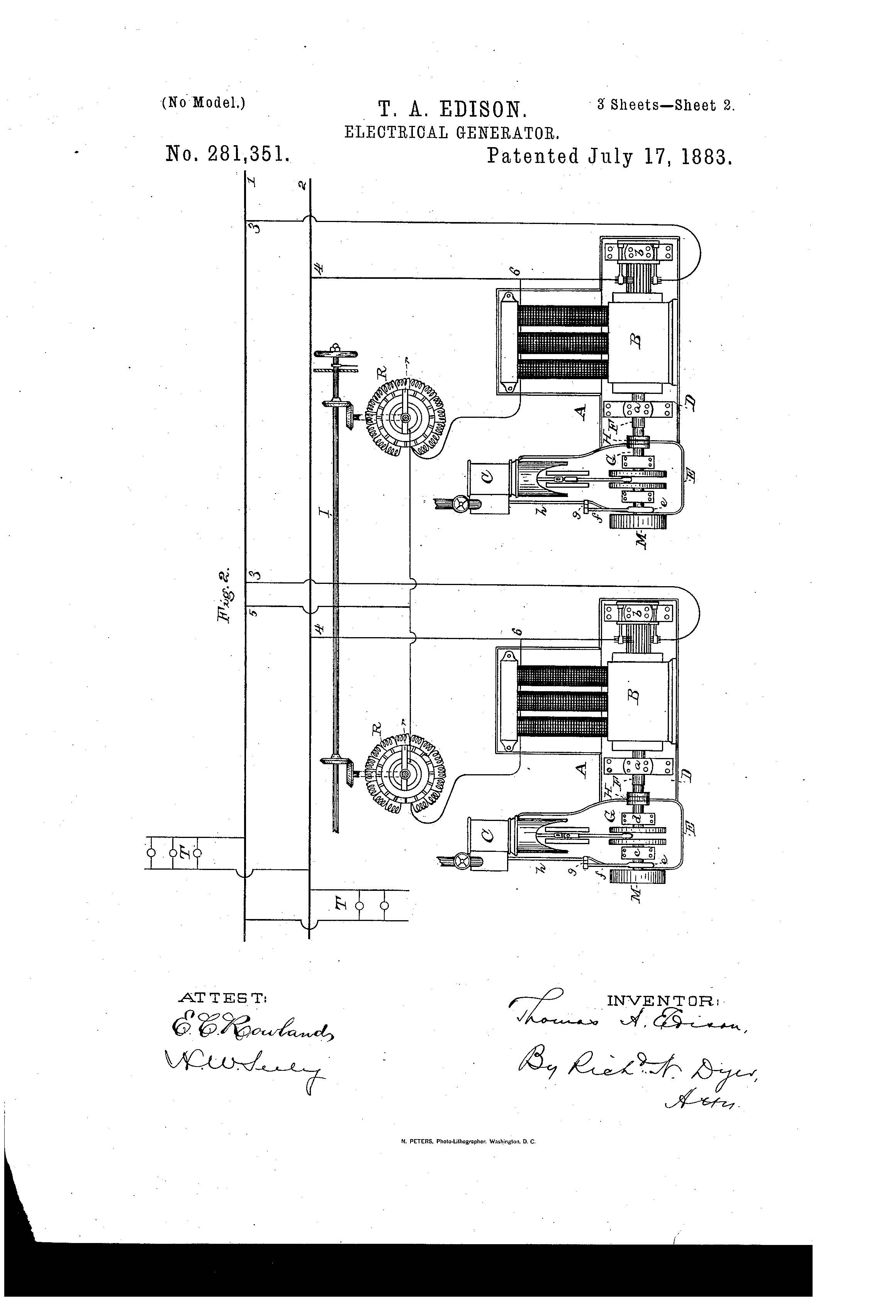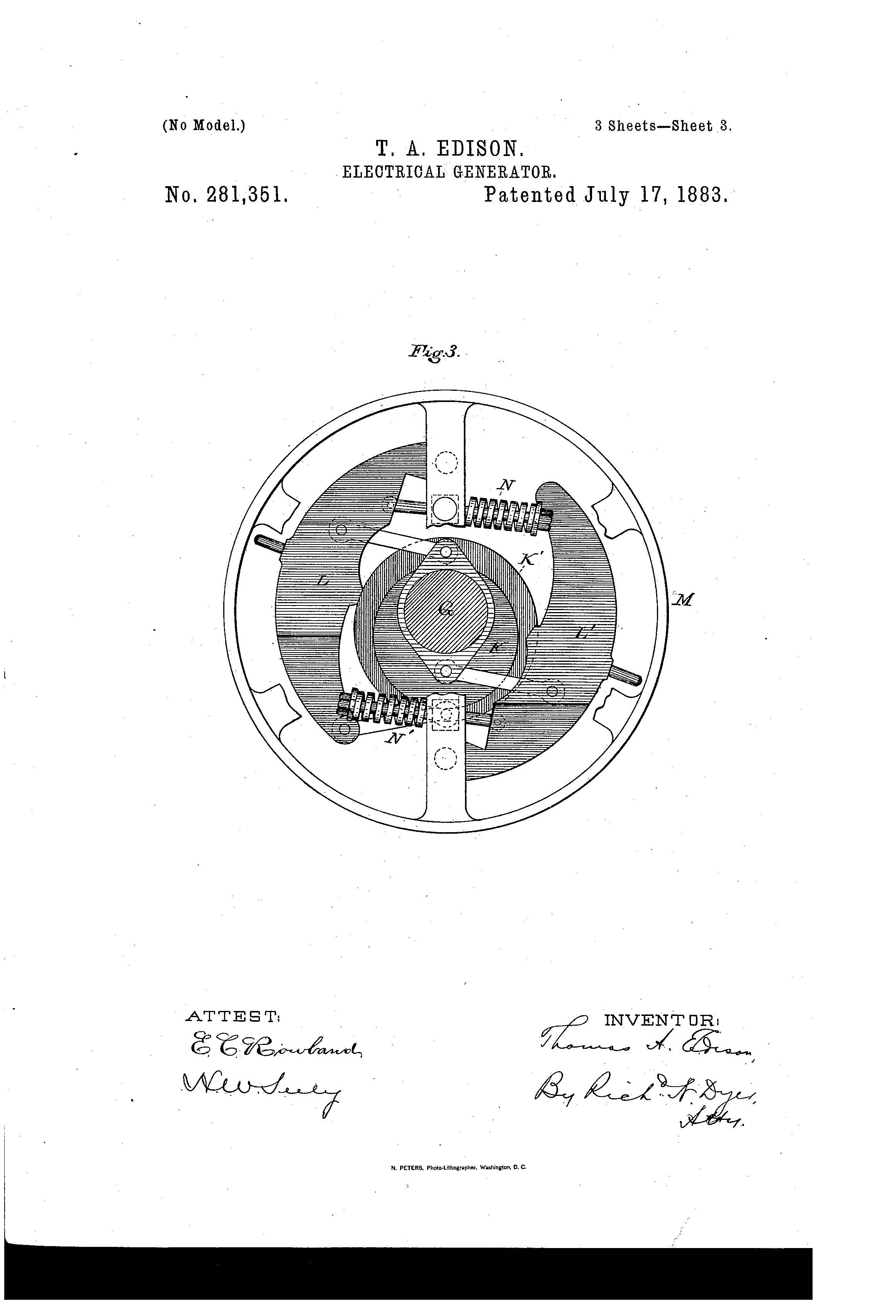Suiter Swantz IP takes a look back at past inventions and inventors with our Patent of the Day.
On this day in 1883, Thomas A. Edison was granted U.S. Patent No. 281,351 for an ELECTRICAL GENERATOR.
An excerpt from the patent states:
The object I have in view is an arrangement and construction of electrical generators and operating steam-engines suitable for use in a central-station plant for supplying electricity to conductors of a system of general distribution, wherein a continuous and constant pressure is maintained on the mains or in other locations where two or more generators are employed, feeding separately into the same circuit. For such a plant I provide separate and independent high-speed and high-pressure steam-engines for operating the dynamo or magneto electric machines, the advantages possessed by this construction over the use of a large low-speed and low-pressure engine for running all of the machines being of vital importance in a general system of electrical distribution. There is greater economy in running generators by separate high-speed engines, since the number of engines in operation can be changed as required by the work to be done or the number of translating devices in circuit. To get a certain speed with a large low-speed engine a definite boiler-pressure has to be maintained, no matter how small the load upon the engine may be; hence there is great loss of power when the load is small, which loss increases largely as the load is decreased below the point of greatest economy. With the large low-speed engine, when the load is small, the friction becomes an important factor in the work of the engine, and the economy is greatly lessened. These difficulties are not met with when separate high-speed engines are used, since the engines can be thrown out of operation as the load decreases, and the engines left running be worked with good economy. The boilers (of which there would be a number, preferably the same number as the engines) can be thrown out of operation; and hence the boilers can also be worked in the most economical way. With the large low-speed engine an extra engine of equal power would have to be provided for operating the machines in case the first engine should break down or had to be stopped for repairs, cleaning, or for other purposes. This makes it necessary to have double the engine capacity required for running the machines, making the investment for engines larger than when separate engines are used, since with the separate engines I have found that one extra or spare engine in every six is sufficient, making the reserve capacity only one-sixth the entire capacity, and this proportion might be still further reduced. I addition, with the large engine, the breaking down of such engine would cause the total extinguishing of the lamps for a time until the reserve engine could be started; but with a number of separate engines, when one breaks down, the load is take by the other engines and the lamps are not extinguished, but only a momentary drop in the candle-power occurs, which is instantly corrected by the regulation of the generators in the manner hereinafter stated. The wear upon the separate engines is also less, since they will be thrown out of operation a much greater proportion of the time than the large engine. A most important commercial advantage is the large saving in the investment for real estate for a central-station plant, it being possible to place the separate engines with the small reserve power in much less space than is required by the two large engines, with the necessary shafting, belting, clutches, &c.
Suiter Swantz IP is a full-service intellectual property law firm, based in Omaha, NE, serving all of Nebraska, Iowa and South Dakota. If you have any intellectual property questions or need assistance with any patent, trademark or copyright matters and would like to speak to one of our patent attorneys please feel free to contact us.


